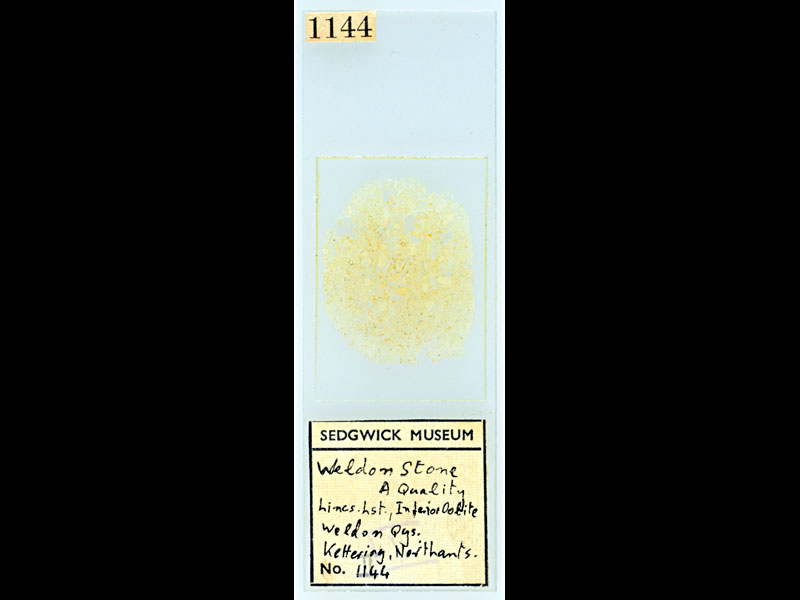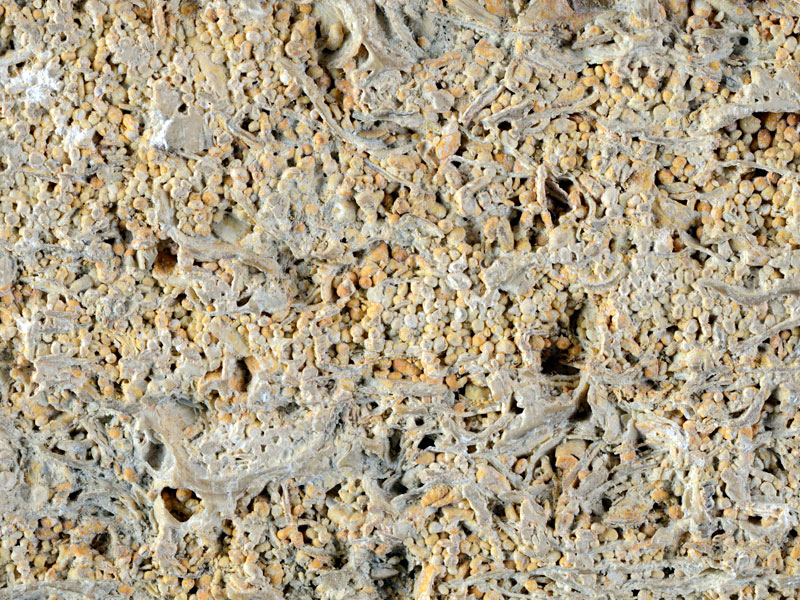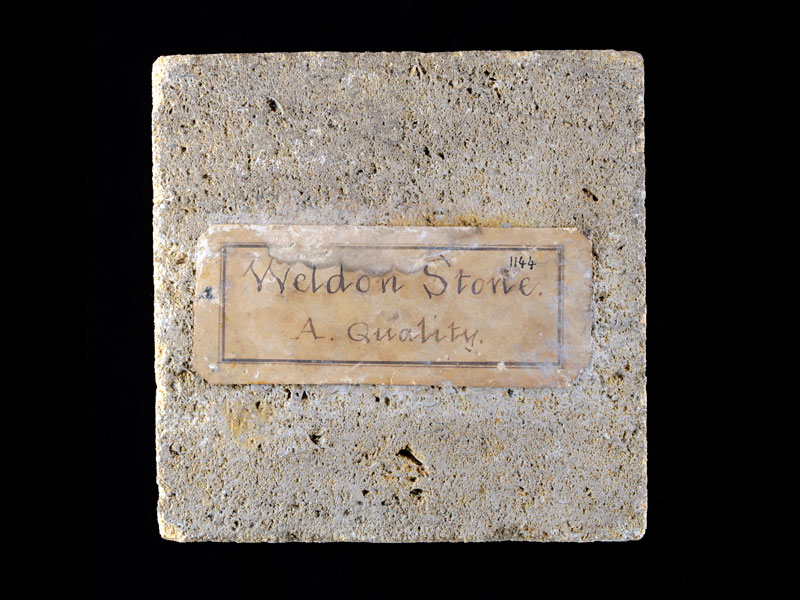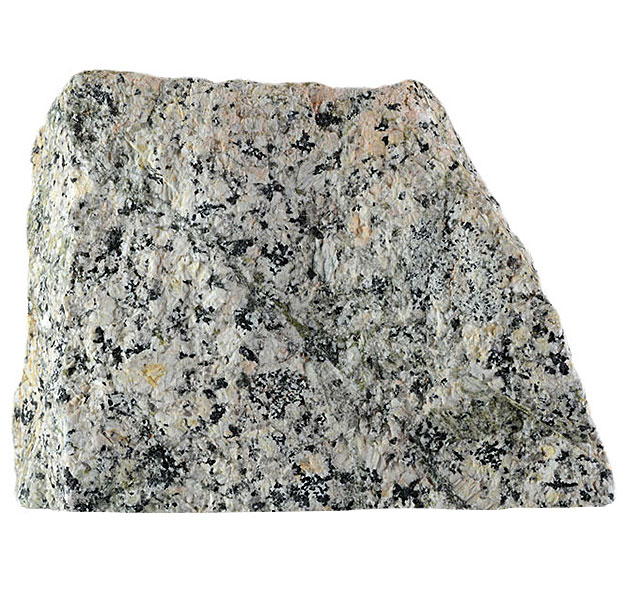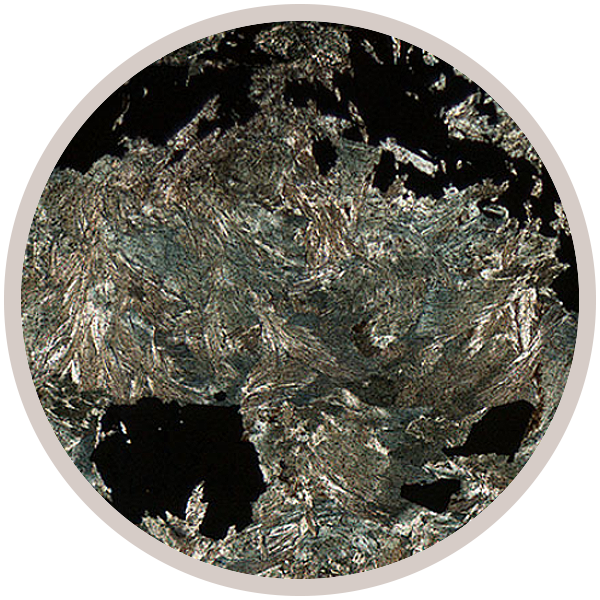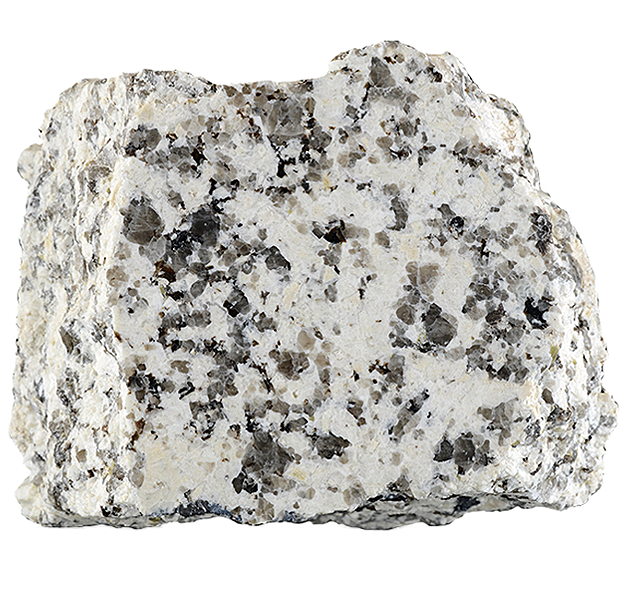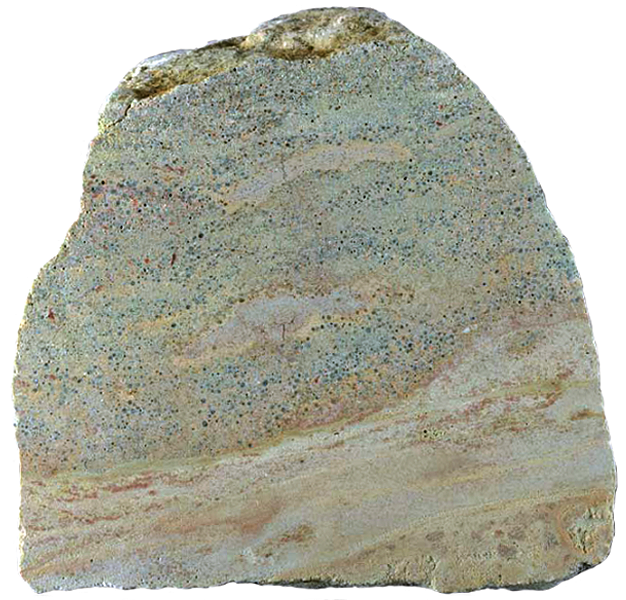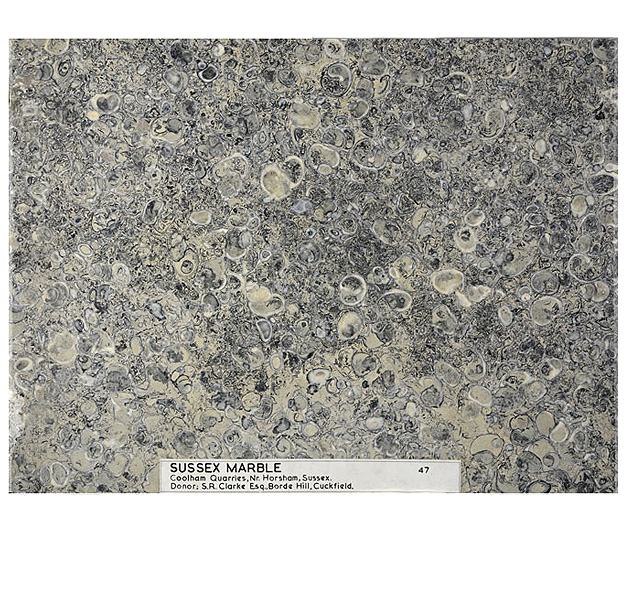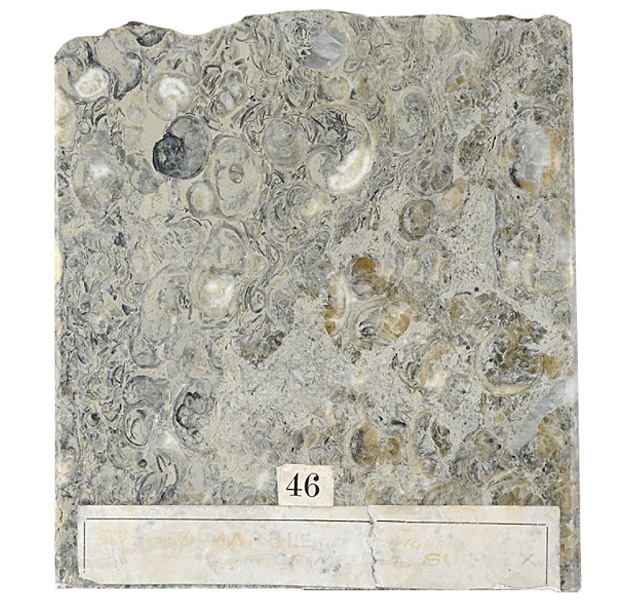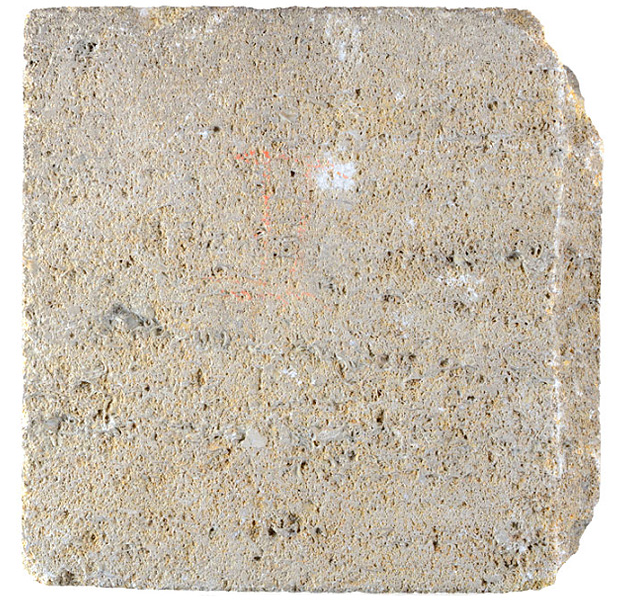
Fact sheet
This building stone was collected from the Weldon quarries near Corby, Northamptonshire. The rock is formed of many small shell fragments and spherical (ooid) or elongate (pelloid) concretions. This rock formed during the Jurassic period; however, similar rocks are still being formed today in warm shallow modern oceans around areas such as the Bahamas. Their formation occurs in shallow marine seas, encouraged by factors such as high calcium carbonate concentrations, agitation of the ooids and pelloids (rolling around on the sea floor maintains the rounded shapes), and probably the action of microbes in precipitation of the coatings.
The thin section contains many open pore spaces as a result of the grains and shell fragments being given rounded shapes by coatings of very fine-grained micrite. Each ooid has a fragment of sand at its core. Other, more elongate pelloid grains formed when mineral and shell fragments were rolled around in the same environment. The largest shell fragments are clearly made of more coarsely crystalline calcite and lie parallel to the original sea floor. While they are not as completely or as evenly coated as the smaller fragments, they nevertheless received some coating before deposition.
The United Kingdom Virtual Microscope (UKVM) collection consists of igneous, sedimentary and metamorphic rocks from around the UK.
It is intended as a teaching resource, helping to tell the story of the common rock types and how they form, and reflecting the history of the UK at the margins of the continent of Europe. The collection is a series of teaching sets, for example igneous rocks from the North Atlantic Igneous Province and SW England; high-temperature metamorphic rocks from Scotland and low-temperature metamorphic rocks from Wales; and sedimentary rocks, including English limestones and sandstones.
